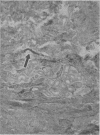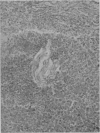Abstract
Previous work on monkeys and on human volunteers led to the development of a schedule of diethylcarbamazine dosage suitable for the chemoprophylaxis of loiasis. In several parts of Africa where this chemoprophylaxis is practised against Loa loa, infections with Onchocerca volvulus are also common. Attempts were therefore made to determine whether diethylcarbamazine has any prophylactic action against the latter parasite by making use of chimpanzees exposed to experimental infections, and also by using biopsy techniques to study the fate of infective larvae inoculated into volunteers.
Both experimental methods proved more difficult to apply in O. volvulus infections than had been the case with L. loa, but evidence was obtained that diethylcarbamazine is not an effective chemoprophylactic for O. volvulus.
Further experiments were then carried out with suramin and with melarsonyl potassium (Mel W). Although both gave some evidence of partial prophylactic activity, their use for this purpose is at present neither practical nor safe.
Full text
PDF







Images in this article
Selected References
These references are in PubMed. This may not be the complete list of references from this article.
- DUKE B. O. Studies on the chemoprophylaxis of loiasis. I. Experiments on monkeys, with special reference to diethylcarbamazine (Banocide). Ann Trop Med Parasitol. 1961 Dec;55:447–451. doi: 10.1080/00034983.1961.11686073. [DOI] [PubMed] [Google Scholar]
- Duke B. O., Lewis D. J., Moore P. J. Onchocerca-Simulium complexes. I. Transmission of forest and Sudan-savanna strains of Onchocerca volvulus, from Cameroon, by Simulium damnosum from various West African bioclimatic zones. Ann Trop Med Parasitol. 1966 Sep;60(3):318–326. [PubMed] [Google Scholar]





